I remember a long time ago, while traveling through China, where I saw a guy with a garbage bag full of disposable plastic water bottles, refilling them from a bathroom sink. So not only does bottled water come with a 280,000% markup, but sometimes it’s not even good.
And if you thought this was something that happens just in sketchy bus stations in China, you’d be wrong. About 25% of bottled water in the US is just tap water. Sometimes filtered, sometimes not.
As someone who enjoys budget travel to out-of-the-way destinations, I’ve spent the last several years keeping an eye on simple, portable, reliable water filters, preferably contained entirely within a bottle, that can handle the sorts of contaminants commonly found in chemically-flavored tap water, bacteria-filled mountain streams, and virus-hiding third world village wells. The number of convenient options that can handle all three of these challenges is, like…five or six. In the world.
So that’s why I was so glad to see a new one show up on the scene a few years ago, which can handle all of those challenges just fine, without requiring any awkward hoses, breakable mechanical pumps, slow-flow straw sucking, or any other nuisance like that. It’s called the Grayl, and it works just like a French press. Fill it up, press the filter, and drink. That’s it.
When I reviewed the original version of the Grayl, I mentioned that its filtration capabilities were as good as anything you can find, with a cost-effectiveness on par with industry heavyweights that have been around for years, and a simplicity (and elegance) that you’re not likely to see anywhere else. The only potential issue, especially for lightweight backpacking, was that it was pretty heavy, coming it at about 20.75 ounces.
Enter the Grayl Ultralight, the update that solves the only real problem the original ever had. It offers the same great filtration performance, using BPA-free plastic to bring the weight down to 10.9 ounces. It feels like a totally different product now. Grayl gave me a couple test samples and spare filters, and, given how it’s currently doing on Kickstarter, there are a lot of people just as happy with it as I am.
If you’re familiar with the original, you already know how it works, as they function identically. But if you’re new to the scene, all that info is in here too.
The Grayl Ultralight, in review
Here it is:
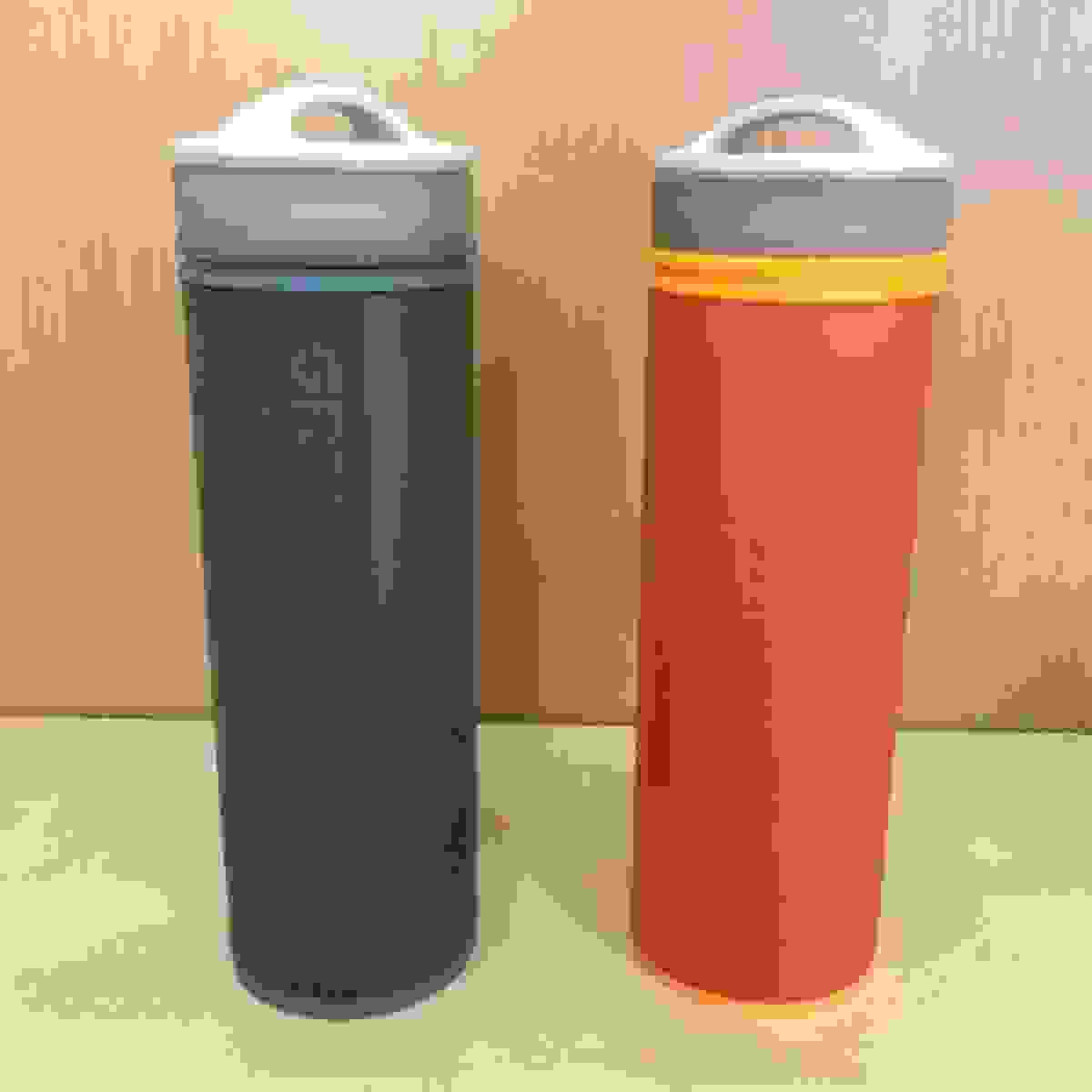
Stats
- Height: 9.625″ (24.5 cm)
- Width: 2.875″ (7.3 cm)
- Weight (empty): 10.9 oz (309 g)
- Weight (full): 30 oz (850 g)
- Capacity: 16 oz (0.473 L)
- Filter lifespan: 300 uses (40 gallons/150 L)
- Estimated Retail Price: $60 (includes one top-of-the-line Travel filter)
The big story here is the weight, which is about half as much as the original stainless steel version. For reference, a stainless steel Klean Kanteen of similar capacity is about 6 ounces (170 g), so the difference between having a filter and not having a filter is a mere 5 ounces. That’s about the weight of an average men’s t-shirt.
But as an added bonus, it’s also estimated that it’s going to retail for $30 less than the original stainless steel Grayl (now called the Legend), and $20 less than the hybrid steel/plastic version (known as the Quest). For lightweight backpackers on a budget, this is a win-win.
Filtration performance
I’m going to segue into a minor lesson on filtration and general water-related safety for a moment. The way I look at it, there are three broad categories you need to worry about when it comes to water quality:
- Particles, whether it’s dirt, dust, or sediment, but also heavy metals and chemicals, like lead, arsenic, chlorine, and many others. These can be found in ordinary tap water, and certain rivers, or lakes, and so on. Most carbon filters can handle this, and it’ll also make the water taste nice and clean.
- Bacteria, like E. Coli and Salmonella, but also bacterially-sized things, like protozoan cysts, such as giardia and cryptosporidium. I group these together, because if a filter can handle bacteria, it can handle the others. You’ll need something that can handle this category (and most likely the previous one) if you’re hiking or otherwise enjoying the great outdoors.
- Viruses, which is where many filters fall short. They’re significantly smaller than bacteria, which means you need a much better filter to handle them. Oh, and when people say their filter can remove viruses, you want actual numbers. If someone says “hey, we remove viruses!” but don’t say how many, that’s probably a bad sign. You won’t run into viruses if you’re just hiking around in a modern country, but if you’re heading someplace like rural Africa or the Amazonian jungle, you’ll want something that can handle this category (and the previous two).
Conveniently, Grayl’s filters come in exactly these options:
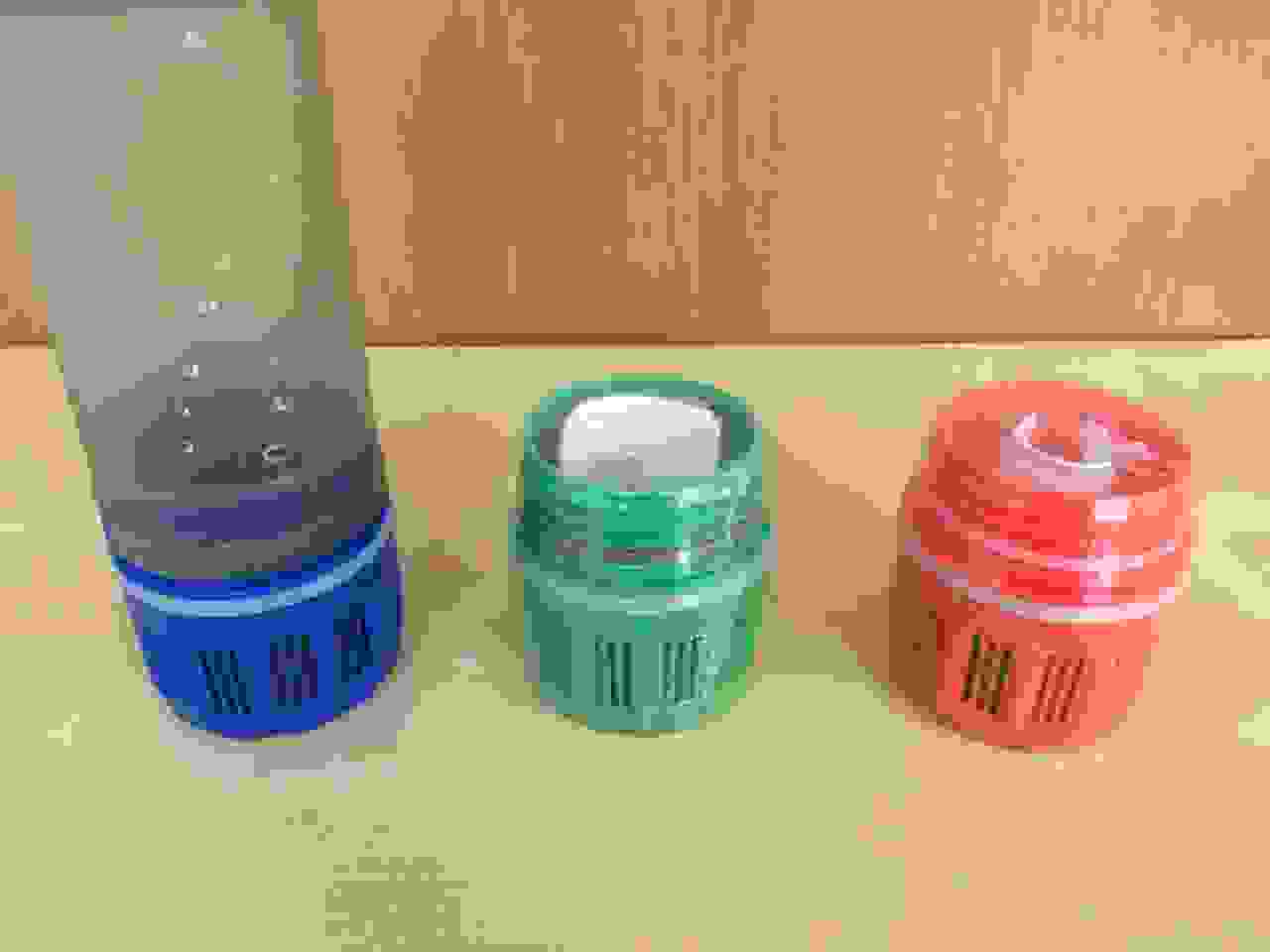
From left to right, those are the Tap, Trail, and Travel filters, conveniently named for exactly what they can handle. The Tap filter is for filtering water at home (filtering particles); the Trail filter is for outdoor hiking (filtering particles and bacteria); and the top-of-the-line Travel filter is for international travel (filtering particles, bacteria, and viruses), or for any seriously questionable water source.
This allows you to use only the filter you need, such as using the Tap filter at home, and swap it out for a Travel filter when you’re heading off to the Sahara or someplace like that. Each filter lasts 300 uses, or 40 gallons (150 L), and will slow down when it’s time to replace it.
Update: Grayl has streamlined the replacement filter options, and now offers either the Tap filter or the top-of-the-line Travel filter (which has been renamed the Purifier). A lot of customers were asking which filter was appropriate for which situation, and this way they don’t have to worry. Use the tap filter at home, and the purifier for everywhere else. As an added bonus, they’ve dropped the Purifier price from $40 to $25.
Here’s the performance of each:
Tap filter ($15) removes:
- Chemicals and metals, such as chlorine, iodine, lead, arsenic, and others. Also improves flavor and odor.
Trail filter (discontinued) removes:
- Chemicals and metals, such as chlorine, iodine, lead, arsenic, and others. Also improves flavor and odor.
- 99.99% of bacteria
- 99.94% of protozoan cysts
Travel filter ($25) removes:
- Chemicals and metals, such as chlorine, iodine, lead, arsenic, and others. Also improves flavor and odor.
- 99.9999% of bacteria
- 99.999% of protozoan cysts
- 99.9999% of viruses
Yes, count up those 9s on the end. I am not aware of any filter that matches this level of performance (most of them don’t bother filtering viruses at all), and even fewer that also offer the convenience of a bottle, which, if you haven’t tried it, is the only way to go.
Using the Grayl
Nothing says “elegant simplicity” like a minimum of components.
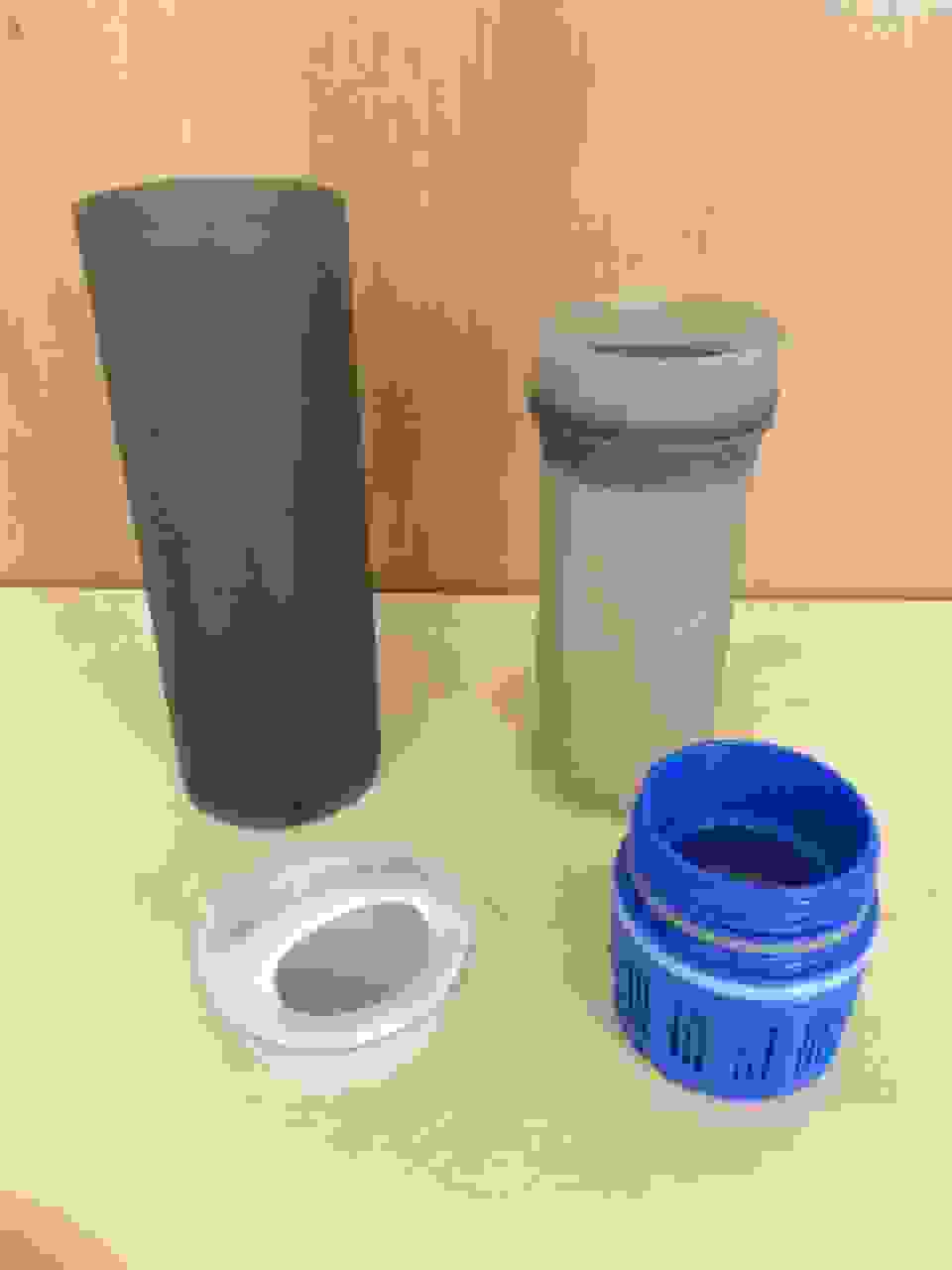
Just fill it up:
Press:
And drink:
It’s really just that simple. There’s no pump to break; no batteries can run out; no iodine to ruin the taste; no hose to uncoil and put away afterwards; no bag to hang up on a branch; no bulb to replace; no straw to hold onto the grime that gets stuck inside…no nothing. Just a few simple components that are easy to use, easy to disassemble, and easy to clean.
The only alternatives that can remotely match this ease of use are the soft-sided bottled filters that use a straw, and you suck the water through the straw while squeezing the bottle to get the water through the filter. It works, but the flow rate is pretty slow, which is agonizing when you’re trying to rehydrate on a hot day. And sometimes those bottles inexplicably use stainless steel, so you can’t squeeze the bottle to increase the flow rate. All you can do is suck. And that really sucks.
Since the Grayl presses the water through the filter all at once, you don’t have to deal with any of that, so drinking from it is just as easy as drinking a glass of water. It does take some extra effort ahead of time, since you have to press the water through the filter (it’s good to press against a low coffee table, or kneel down and press it against the ground, so you can use your body weight to make it easier), but the 15-30 seconds it takes to press the Travel filter means no sucking and squeezing later, and the Tap and Trail filters go even faster.
You know what else is great? You can pour the clean water into another container.
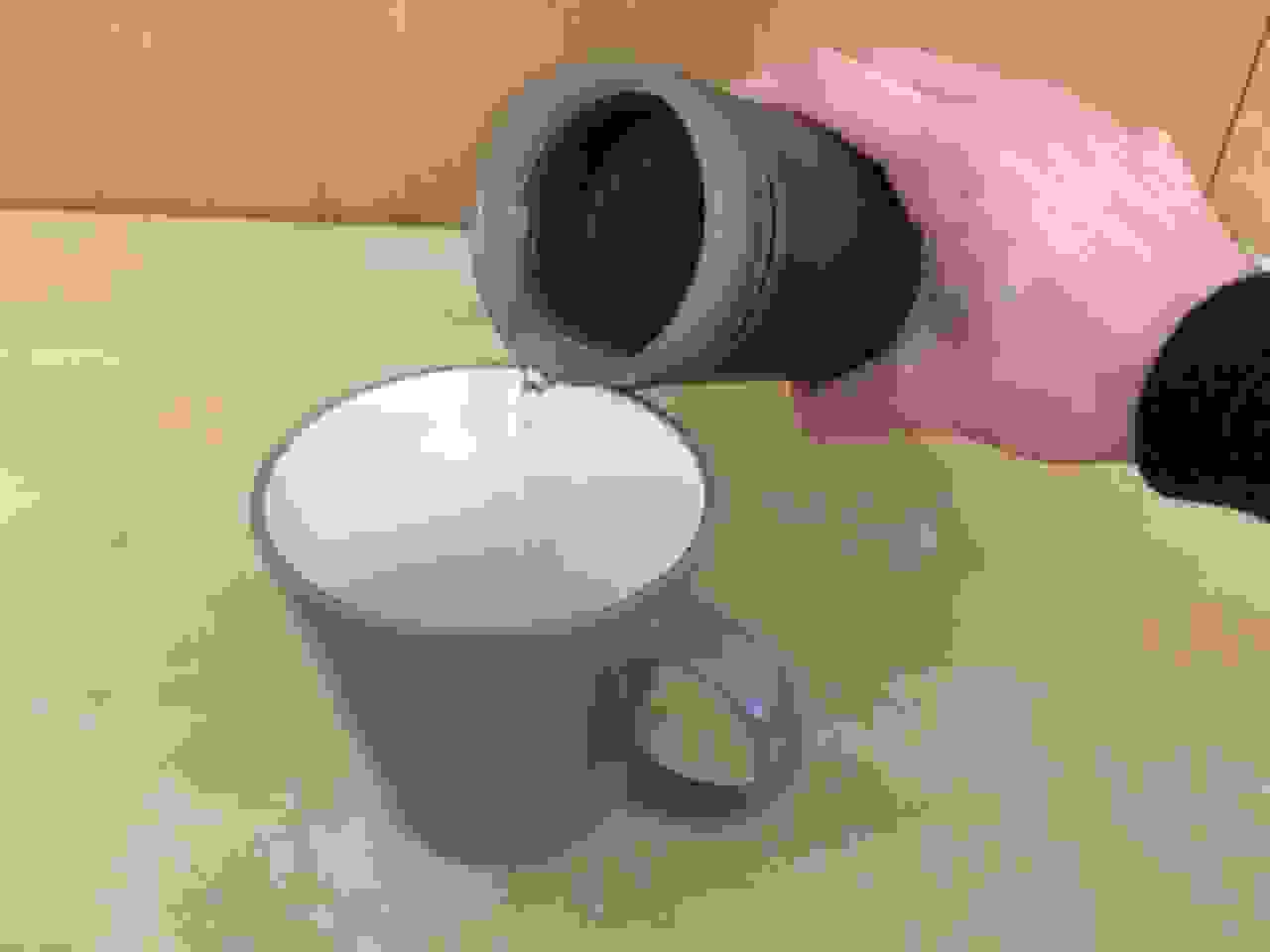
That’s generally out of the question for the suck/squeeze bottled filters, which means you can share a single Grayl between multiple people, or use it to fill extra bottles for backup. You could do the same thing with pump/hose filters, but the Grayl Ultralight is lighter, simpler, and has a lower upfront cost.
Minor improvements to this version
Compared to the original stainless steel Grayl Legend, the Ultralight has a couple design changes that fix minor usage issues.
1) Straighter
Notice how the stainless steel version can tilt a bit as you close it, whereas the Ultralight stands up straighter:
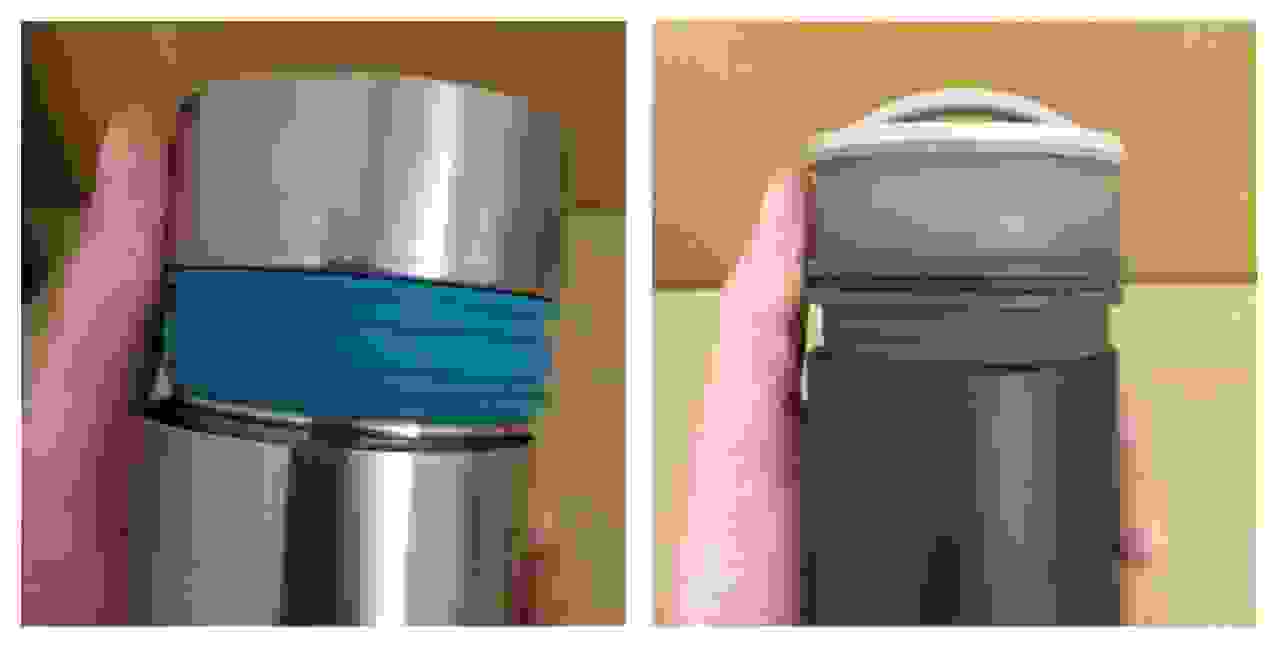
With the stainless version, it’s possible for the lower cup to “bite” into that blueish rubbery band, whereas the Ultralight won’t do that. This is partly due to the extra thickness of the plastic, which keeps it much straighter, plus that 90 degree angle where the outer cup meets the seal. There’s nothing to get in the way.
2) Grippier
That rubbery band is also bigger than before, jutting outward just a bit, rather than being recessed slightly, providing a non-slip grip for your thumb and forefinger. The plastic used in the bottle is also a bit textured, so it’s fairly grippy as well, and the textured surface also cuts down on condensation building up and dripping down the sides if the water inside is too cold.
3) Clippier
Lastly, the new lid can hook into a carabiner:
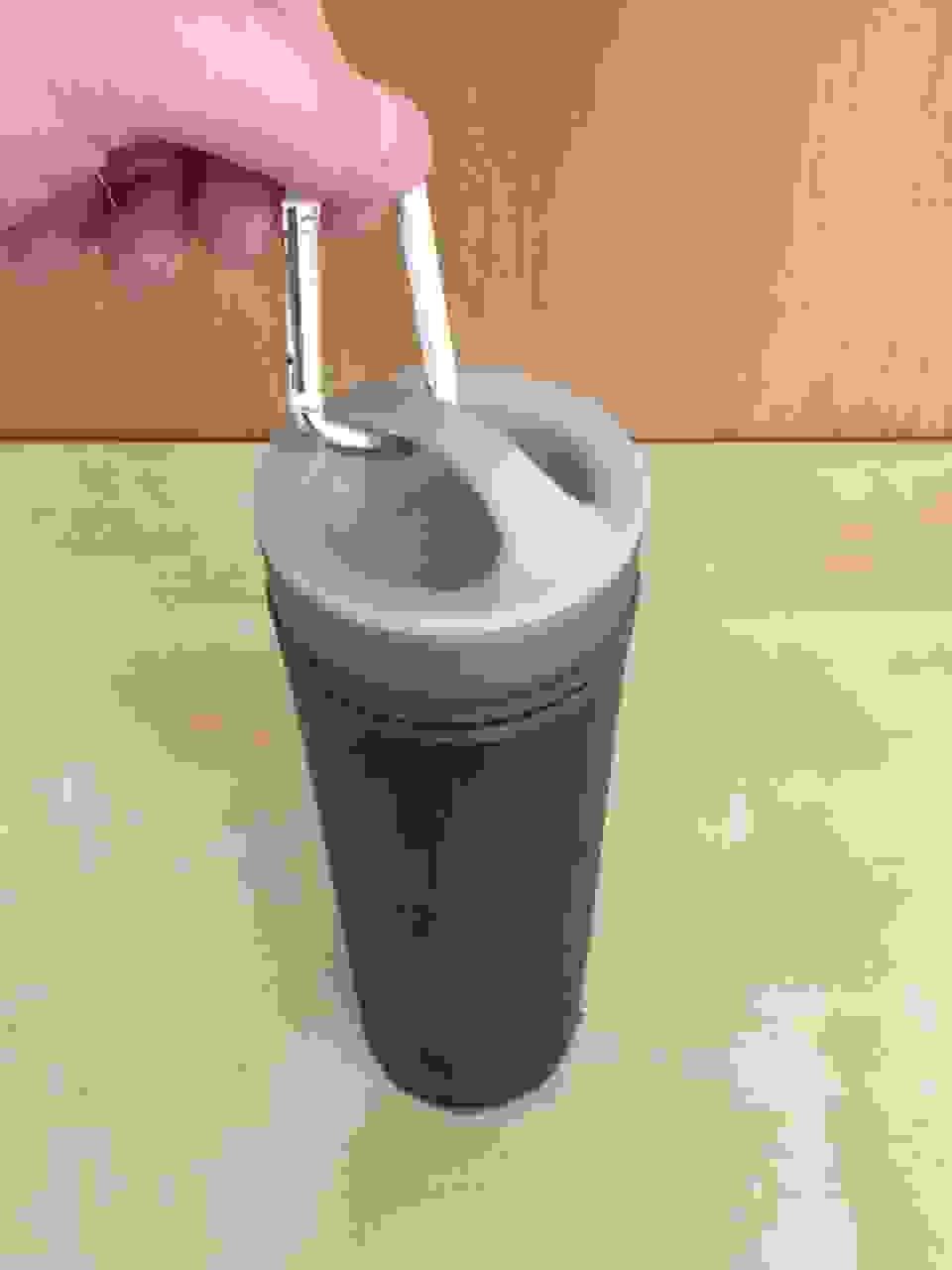
This is great for clipping it onto the side of a backpack, usually through the compression strap that tends to be over there, or you could loop a shoulder strap through it and carry it by itself, without needing a daypack.
There’s some discussion of maybe designing an alternate cap with a smaller drink spout, which would make it easier to drink while moving on a shaky bus, or riding a bike. I’m looking forward to seeing something like that at some point, but in the meantime, this is quite simple, lightweight, and carabiner-compatible. It also doesn’t take that many rotations to open it. You know how you have to rotate certain caps three or four whole times to get them open? This one doesn’t need more than a quick twist.
Minor usage tips
- You’ll want to use your body weight when you’re pressing the filter, especially when using the top-of-the-line Travel filter, which has more resistance than the other filter options. As mentioned, find a low coffee table, or a sturdy chair, or just kneel down and press against the ground, rather than using a high countertop.
- When pressing the filter, or removing the inner cup from the outer cup to fill it up again, open the lid just a bit. This will let the air escape, so you’re not fighting against a vacuum.
- When you’re pressing the filter, leave the cap on, but open slightly, so you don’t get your hands on the rim where your lips will go.
- If you take it on a plane, the air inside the bottle will be under a higher pressure than the air inside the cabin, which can force the seal open. So when you get up into the air, just open the lid, and close it again. That’ll equalize the pressure. You can also empty it out before you fly, so there’s no water to leak out (remove the inner cup from the outer cup and empty both, as there’ll be a bit of moisture in the pre-filter area as well), or, alternatively, you can fill it up all the way, so there’s little or no air inside that can change pressure. Fun physics fact: Liquids don’t change much in response to pressure.
- When you’re removing the inner cup from the outer cup, twist it a bit, instead of just pulling it straight out. It’ll come out more easier.
Final thoughts!
As you can tell, I’m quite happy with this. The one and only potential problem with the original design was the weight, which has been completely solved. The filtration performance is up there with the best filters you can possibly find, and even beats several of the more famous options out there, often by a lot. Better yet, this fits into a bottle you can take with you anywhere, with no dangly hoses, no pumping, no sucking, no squeezing, no lightbulb shining, no battery switching, no waiting half an hour for iodine tablets to work, and no iodine flavor when you’re done waiting. Just fill, press, and drink.
In the last few years, certain worthy competitors have halted operations, while several others have been shown to have wildly unrealistic marketing claims, and some continue to be inexplicably famous despite their insufficient performance. And, in the same time period, we’ve had lead poisoning scares, E. Coli outbreaks, and other nuisances that most filters were not designed to solve. They even treated the E. Coli outbreak with chlorine, and then the water tasted like chlorine. Great!
Grayl is one of the inexplicably few options that can handle all these contaminants (and pesky viruses), with removal rates as good as anything you’ll find, combined with unrivaled ease of use and portability. And by swapping out the filters according to what level of filtration you need, you can use it at home, in the woods, or in remote villages in developing nations. In other words: Anywhere.
Now that there’s a lightweight version at half the weight (and a lower cost), there’s just no down side. This is coming with me wherever I go.
Head over TheGrayl.com to check it out.
As mentioned, they’ve provided me with a test sample, and, years after this review, made me a revenue-sharing offer as well. But I liked it long before then anyway.

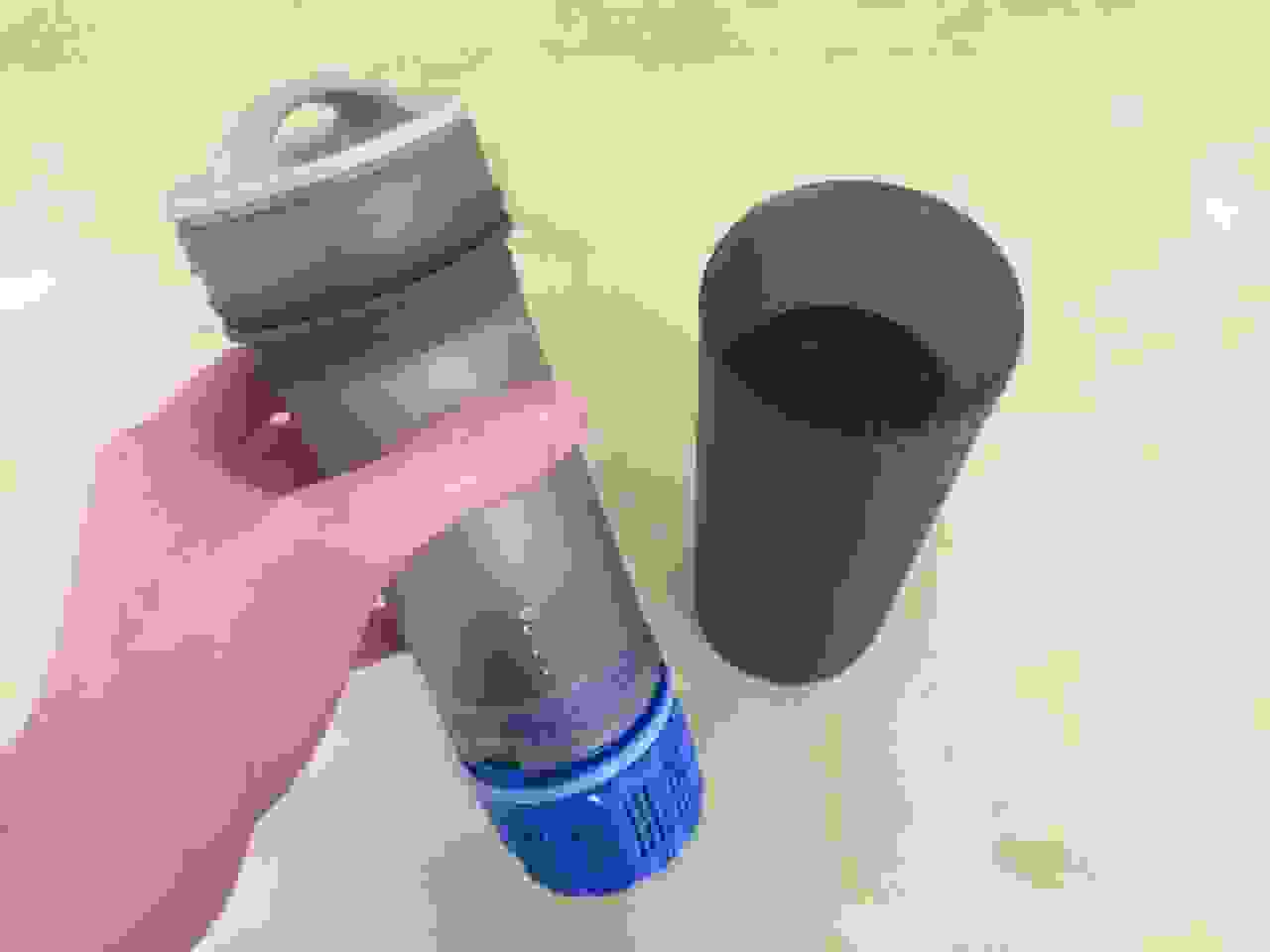
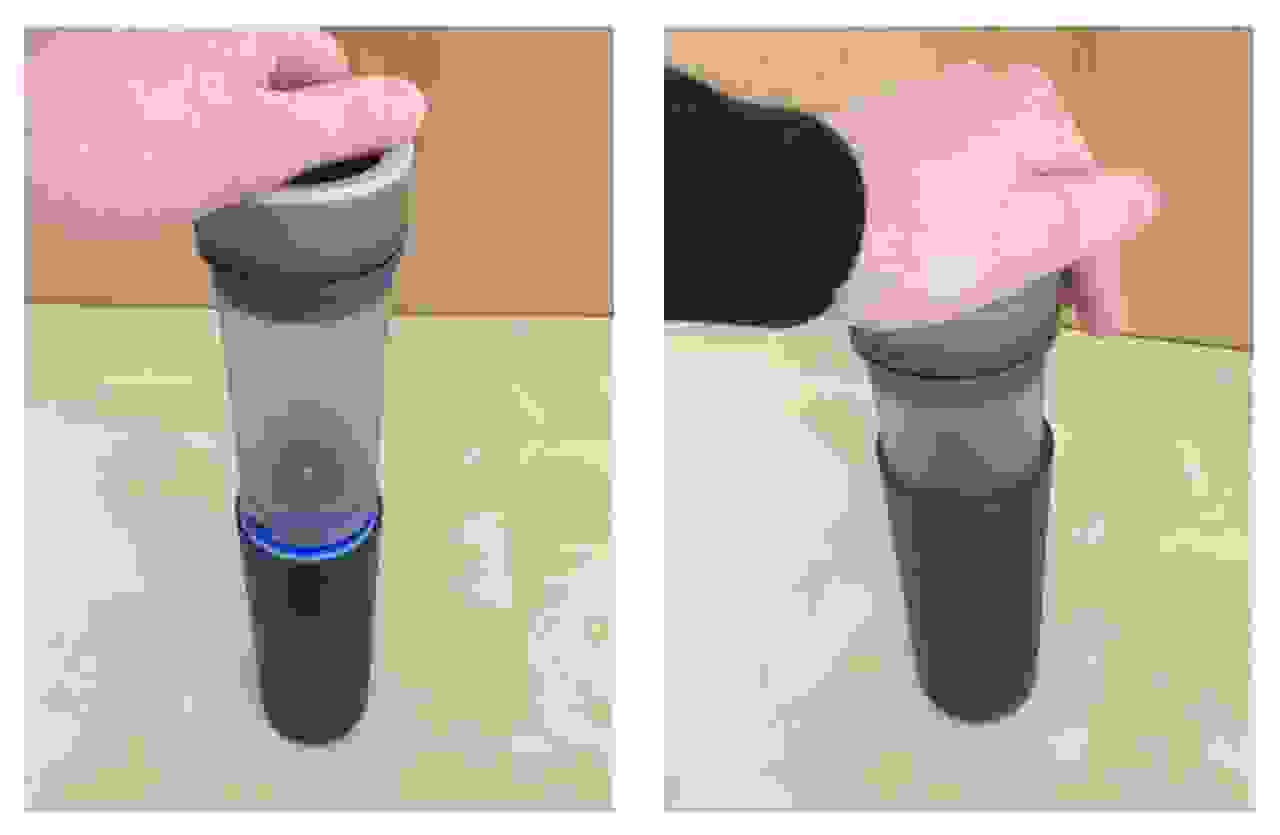
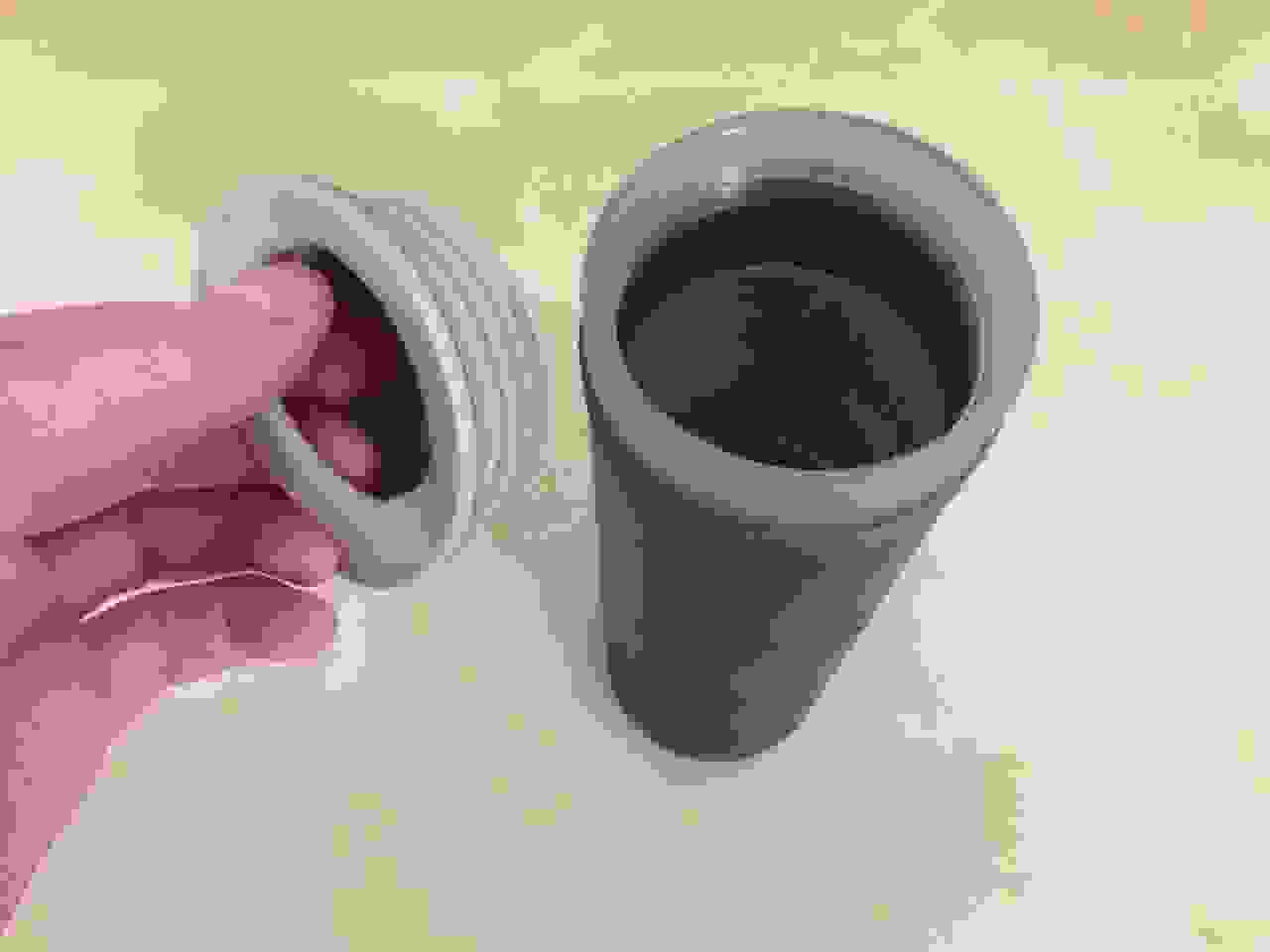
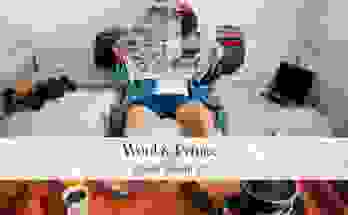


I’m glad to see Grayl make the filters lighter and cheaper. Makes it much easier to recommend to friends who might be on a tighter budget. I got a Quest some months ago using one of REI’s periodic coupon codes. Also several spare cartridges of the earlier type, where the colors and nomenclature were more confusing, on clearance from Backcountry. But not everyone can hunt down bargains like that. Especially on short notice. Now I can just say “Grayl ultralight!” and call it done.
I carry the Quest in my standard overnight bag (just add gear for camping or clothes for travel), but have never used it because I don’t want to start the clock ticking on the cartridge’s life span. Found myself wishing for it in Florida last week though. I’d left it at home due to weight, brought along some collapsible water bottles instead that ended up leaking, and quickly got annoyed with how funky the water tastes in the Magic Kingdom. My family got a little cranky from dehydration after refusing to drink that water. Ended up using lots of lemonade flavor packets. Gotta wonder if a Grayl would’ve helped.
Two of my sons are Boy/Cub Scouts. I gave each of them a Sawyer mini squeeze filter. About $20 and rated for huge amounts of water, but trickier to use and does nothing for viruses or chemical pollutants. But it’s cheap and extremely small so the boys are more likely to actually have it on hand when wandering off the trail at camp. Thought of sending them with Grayls, but even the Quest model is too heavy by their standards. Scout policy is they must carry around the “essentials” at all times when camping — including rain gear and extra clothes. Every extra gram counts with that kind of base load. Grayl’s ultralight model with the cheaper orange filter would be better for that usage scenario than previous models.
Good to know Grayl has been making improvements to the product line.
If any of the Grayl people are reading this: Grayl Ultralights ought to be in the official Boy Scout stores. Way better than the other filters they sell now, and much better visibility to potential customers. Worth looking into.
Hi,
Nice website. I will travel for a year or more by bike through South America, Central America and South East Asia and the Grayl Ultralight looks great, but has rather a small capacity. I am looking for a similar product, able to remove viruses, but from 1 l to 2 l rather than 0.5 l. Would you know whether Grayl or another company offers such product?
Thank you.
I don’t know of any bottles with a significantly larger capacity. I think the best option is just to bring two bottles; a Grayl, and a second, regular water bottle. Maybe one of those collapsible ones, so you can store it without taking up space. That way you can store a lot of water, filter it when necessary, and carry one bottle on each side of the backpack, to keep the weight centered.
Hello,
I don’t see how you can recommend the Grayl over the Water to Go filter bottle, half the price, lighter and mush easier to use ?
Am I missing something ?
Thanks,
Lee Ho.
I’m quite sure the Grayl and Water to Go use the same filter material, but the Grayl uses twice as much of it, so its removal rates are higher. I wouldn’t get TOO worried about it, but it’s something to think about (nothing gets 100% removal, so it’s 99.9%, or 99.999%, or something like that). Also, part of the Grayl’s design was intended to provide the advantage of not having to use a straw, which often requires a lot of strong inhaling to use; plus, you can pour it out for a friend. They both work, but people out there might just have a personal preference for the straw or non-straw design. Personally, I just like the look and feel of the Grayl, and I think that if you take its higher removal rate into consideration, since it uses more of that filter material, that’s why it’s more expensive.
Hello,
I’m going to South America (Argentina, Chile, Bolivia, Peru, Ecuador) for 6 month. Main goal is to avoid buying bottled water. After reading a lot of reviews the grayl seems to be the best option (filtering viruses, option to pour out water without sucking). Would you recommend it for longterm use and for a girl? One more question: Is it possible to use the bottle without the inner part? For example when I’m back home and want to fill up with clean tap water?
Theanks for your help!
Christina
You can’t use the bottle without the inner part, but you can just fill up the top by removing the cap, if you know you have clean water and you’re not worried about it. They do have another filter cartridge just for tap water though, so if you’re somewhere that has lead flavor in the pipes, then that’s what you’d want. It’s very durable, and I expect it’ll last a long time. The silicone bands that form the seal are installed directly on the filter cartridge, so they get replaced every time you get a new filter, so there’s really nothing that can wear out over time.
The only alternative you might want to think about is something with a smaller drink spout, like a straw, if you’re riding a bike, or something like that, but if you prefer the drink-from-a-glass style of the Grayl, then I don’t see a downside.
I think this article and your responses are somewhat dishonest and perhaps financially biased towards Grayl for some reason. You linked to an article that pointed out many filter companies make grand claims about their filters without any certification. Yet, for some reason, you then go on to claim that the Grayl is the end all solution without any justification. Why? Because you say so? Because Grayl says so? Where is Grayl’s certification? Why should we believe you or them? This is serious business because you are talking about people getting very sick and even potentially dying due to false claims and a lack of certification and regulation. Where is Grayl’s certification? The only filter I could find that had EPA certification was the AguaMira Frontier Pro. What about Grayl? There is no mention of certification by you or Grayl.
Sorry, it’s the Frontier Max Filtration System that has the EPA certification. I have not found any other lightweight convenient filter with EPA certification.
This is another one that has some certification: http://www.purehydration.com/
On another article of yours a poster mentioned it, but you failed to respond and ignored it. You should follow up these articles with information about which ones have some sort of certification and which ones (like the Grayl) make baseless self-efficacy claims. You owe this to your readers both ethically and morally. If you want to favor some pair of travel pants or whatever bloody socks who cares, but water filtration is a serious matter that you should be thorough, clear and honest about.
I emailed the Grayl people to get the lab info. It’ll be up in a moment via comment response.
A valid point, I look forward to their response as I have been using mine in some questionable water.
Thank you. Sorry, I should have been more diplomatic. Sorry about that and thank you for your kind response and effort to look into it. Much appreciated.
No problem. This gets both contentious and detailed, and I wanted to get the testing info to clear up any questions. I was looking at the lab tests they’ve run, but wanted to make sure it’s fine to share publicly, in case there were any concerns with competitors and things like that.
Thanks for the question, Joe. At GRAYL, we take quality control and testing very seriously because, as you mentioned, water filtration and purification is a very serious matter.
GRAYL tests every single batch of units we produce in 2 ways. First, we pull random units directly off the production line and submit them to rigorous ‘physical testing’, in which we use pressure and water ensure the integrity of our materials and seals.
Second, we ship 1% of units to in independent lab for testing. We undergo 4 different types of tests. You can see test result for each type in this Dropbox folder – https://goo.gl/1ytnlt
At the lab, there are 3 types of tests we run.
1. Broad-Spectrum Pathogen Testing – Every batch receives full pathogen testing to determine pathogen removal rates. See Attachment: Grayl RT, MS2 and Cyst study BCS 1611102-112 11.09.2016
2. Chemical & Heavy Metal Testing – Periodically, GRAYL performs a series of challenges against a wide array of chemical and industrial impurities. The results of these test can be found in to documents. The first: J58944-1 UDS Level 2 Report Final Report is the official lab report, it is difficult to read without training. We summarized its findings in this document: Grayl Chemical and Heavy Metal Test – Share
3. Specialty Testing: We are interested in how GRAYL’s Purifier Technology performs in special situations. For instance, we recently ran a series of tests in turbid water (aka, silty water, muddy water) to analyze performance and lifespan in non-clear water. See results here: GRAYL TurbidWater Test – Dec 2015
Very happy to answer additional questions on our testing regime. Please contact us at info (at) thegrayl (dot) com.
Travis – GRAYL Co-Founder
I think I’ve concluded that if one wants to be totally safe, you have to use the filtering in combination with water purification tablets or boiling. The filters can get a lot out, but there is no guarantee, so following up with tablets or boiling is prudent. These are the recommendations of the CDC. The Grayl is exactly the kind of thing I am looking for as well, but without third party certification, it is too risky considering the potential consequences. They will probably say that it does what they say, but no matter what the water filter industry seems to be weak when it comes to reliable certification. I may end up getting the Grayl combined with tablets since it is seems to be the most elegant, well priced option out there. There are, however, plenty of DIYs as wekk that could also get the job done in combination with tablets.
That’s a pretty good homemade filter, Joe!
You are correct that third-party certification of ‘portable filters/purifiers’ does not currently exist (as it does for fridge filters, for instance). I understand there is a group working w/ NSF to create such a certification.
One challenge to this certi is that, unlike fridge or under-sink filters, there is no standard form factor. The regulations would have to cover GRAYL’s unique Fill. Press. Drink, plus suck/squeeze bottles, suck straws, gravity filters, camping pumps, etc.
In the meantime, I think it’s legitimate to demand a higher level of transparency about testing from manufacturers like GRAYL. It’s definitely something that GRAYL is working on.
Again, thanks for your interest.
Hi Travis, thank you for your attention and transparency. There are a bunch of home made DIY filters out there its seems. http://briangreen.net/2011/06/ultralight-17g-1-micron-water-filter.html
However, there are potential contamination issues with them. Commercial filters like the Grayl probably are a better, safer and more convenient route to take. The Grayl certainly has its benefits and is a valuable and necessary part of the purification process. Of course I am sure you know way more about it than I do as I have only researched it recently. After all the reading I did, I realized that most of the filters, and not just the Grayl, have their limitations and that in the end a combination of filtration and chemical treatment with tablets/drops or boiling is the safest route. The Grayl is just as good if not better (due to its convenient process and design) as any of the other filters out there. There are only a few others that have some EPA certification but even those seem to be potentially faulty due to failure, user error or age. Not surprisingly, they are much more expensive and cumbersome to use, so something like the Grayl certainly has its place for many users. Best of luck to you and I would also just like to add that Snarky Nomad has a terrific site here with a lot of excellent information that I find very useful.
Good points, Joe. I really appreciated your knowledge and viewpoints.
Just note that, according to the CDC, chemical tabs (iodine or chlorine) is not effective against protozoa (Crypto or Giardia).
https://www.cdc.gov/healthywater/drinking/travel/backcountry_water_treatment.html
Eytan, I’ve been coming to your sight for quite some time ever since I was about to leave the country for the first time to study abroad. Now, as I head to Nicaragua for 3 months, I have a carry on weweughing 20.5 pounds and I couldn’t be happier. You’ve been such a great ultralight travel resource, and I just wanted to sincerely thank you. All the best, and thanks again!
20.5 pounds? I’m not sure that’s quite right…sounds like a typo. Either way, I’m always happy to hear that I’m being useful to someone.
I live in Australia, and have several chronic illnesses, one of which gives me many intolerances, sensitivities and digestion issues.
Tap water in general makes me sick. But even some bottled waters do. I doubt it’s bacteria or viruses causing these reactions: it’s more likely to be something the water has been treated with (eg chlorine, fluoride etc).
Does the GRAYL remove those kinds of things too, or only particles and germs?
Yes, it removes a lot of chemicals, including chlorine and iodine. My understanding is that fluoride removal is far more difficult, so most filters don’t make claims about removing fluoride, even though they might remove a little bit of it, but the carbon filtration step removes a lot of these, because it’s absorbent, so chemicals get stuck inside.